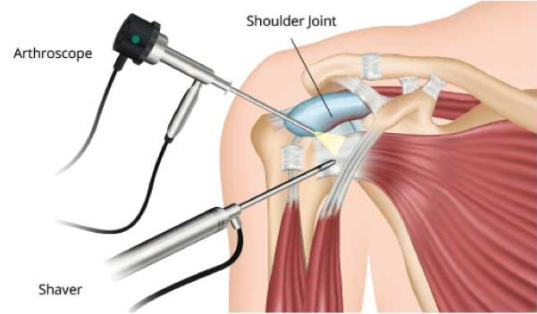Shoulder Manipulation and Release Surgery
Your Diagnosis
A shoulder manipulation or an arthroscopic release is a short procedure done to help a frozen shoulder (See section on Frozen Shoulder).
What happens during Surgery?
Usually the person goes to sleep (general anesthesia) and wakes up 15 minutes later with normal range-of-motion of their shoulder. If they had an arthroscopic release then they will have one small cut in the front of their shoulder and one in the back. If the person had a manipulation then there will be no cuts through the skin.
Immediately after Surgery
The
person will wake from surgery in the recovery room where they will spend 1
to 3 hours. Most people will then be
allowed to go home when they are awake enough. The person will go home in a
sling. The person cannot drive or take public transportation home. They must
have a ride.
A person may have questions following the surgery. Many of these frequently asked questions about surgery can be answered here.
What to expect after Surgery: Week 0 through Week 6 (Phase One)
- Pain: Immediately after surgery the person usually has a fair amount of pain. This will be treated with oral pain medications. The pain usually subsides rather quickly and almost all people will stop taking the pain medications by day 5 after surgery. The remaining pain will usually go away over the next 3 months or so.
- Therapy: After waking up from surgery with a full range-of-motion, the person will begin the Four Quadrant Stretching Program right away. Each set of exercises must be done 5 times a day. This program will continue for at least 6 weeks. Not doing the therapy will cause the frozen shoulder to return very quickly.
- Precautions: The person will be given no restrictions. They should begin to use their shoulder and arm as normally as possible as soon as possible. Using the arm usually hurts but the person is not doing damage when they feel the pain. “Babying” the arm after surgery can cause the frozen shoulder to return.
- Work: Most people take several days off from work to recover. Some people go back to work nearly immediately. If the person goes back to work it is very important that they are allowed time to stretch while at work. If the person does not stretch at work the frozen shoulder will return. Your doctor will write any note needed so the person can stay out of work so they can stretch.
What to expect after Surgery: Week 6 through Week 12 (Phase Two)
- Pain: The pain is much decreased. Stretching and some activities will still hurt.
- Therapy: Stretching 5 times a day is usually still needed.
- Precautions: There are no precautions and people have usually resumed most of their normal activities.
- Work: It is likely that the person has returned to work
What to expect after Surgery: Week 12 through 1 Year and beyond (Phase Three)
- Pain: Most people have minimal to no pain.
- Therapy: Most people decrease their stretching. Some people have stopped all stretching.
- Precautions: There are no precautions and people have usually resumed their normal activities.
- Work: Nearly all people are back to work.
